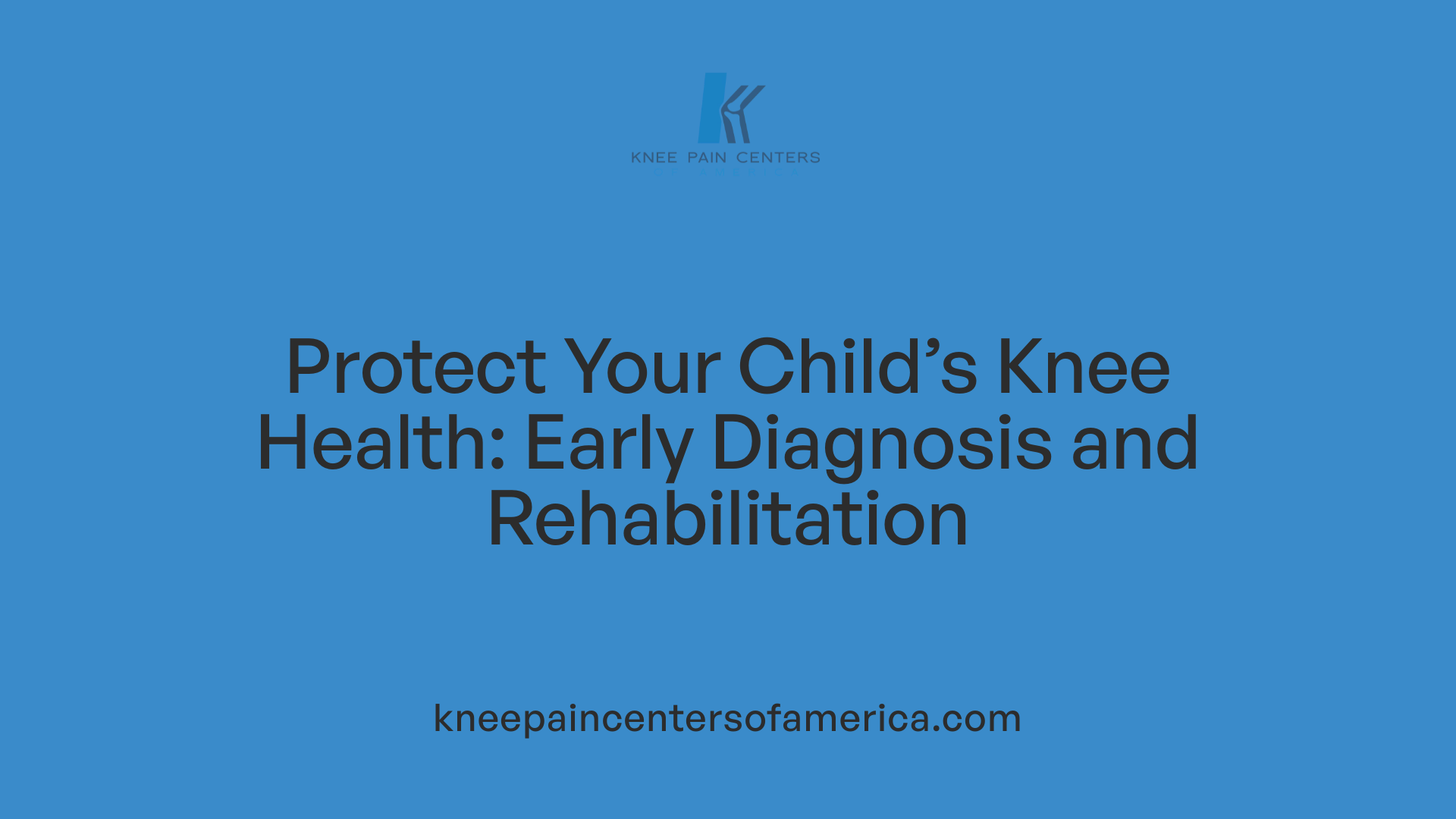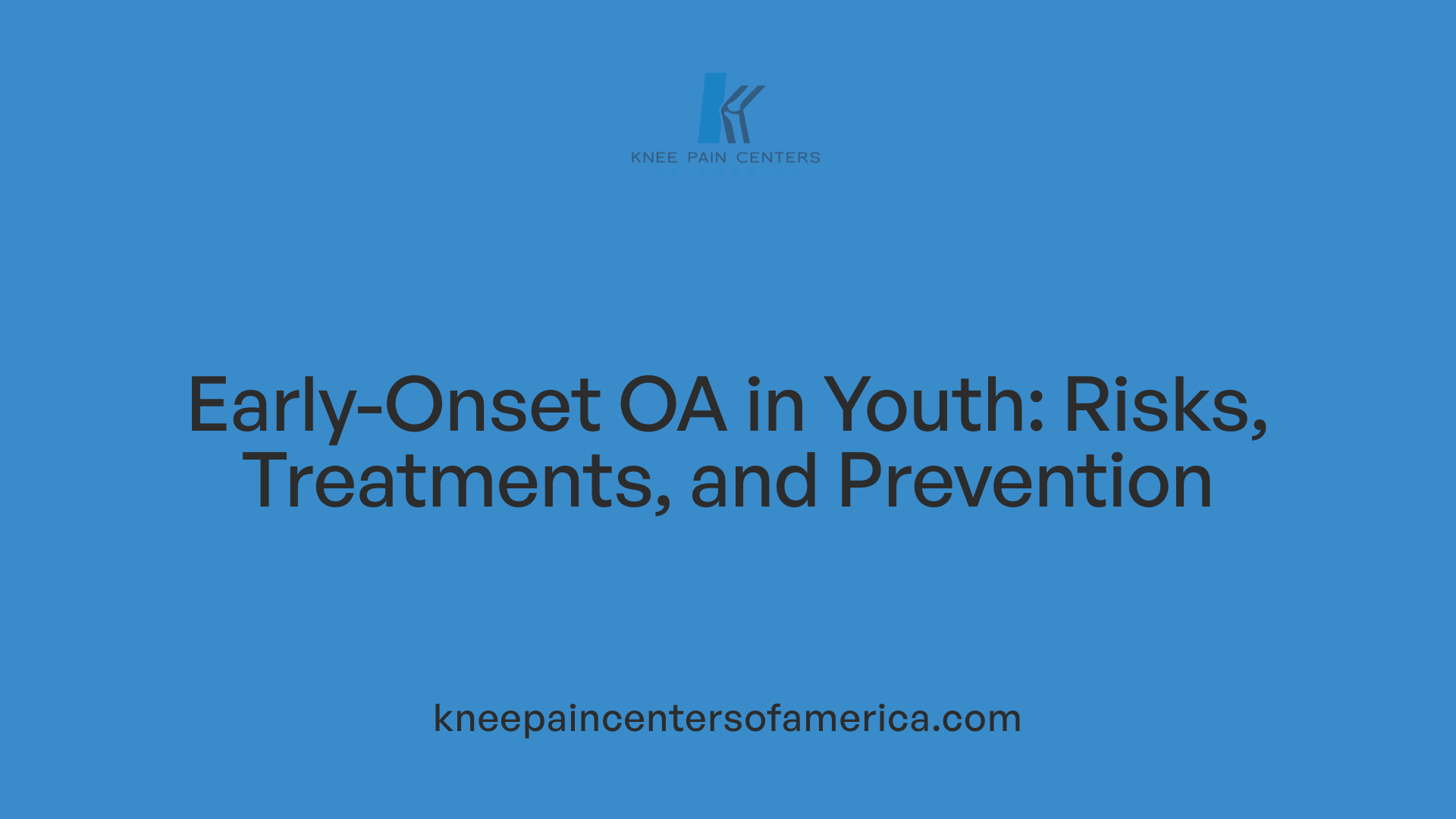Understanding Knee Pain in Children and Teens
Knee pain in children and teens can arise from a variety of causes ranging from benign growth-related discomfort to more serious autoimmune conditions and injuries. Given the diversity of potential causes—from juvenile idiopathic arthritis to sports-related injuries—proper diagnosis and targeted treatment approaches are vital to ensure healthy development and long-term joint function. This article explores the common causes, diagnostic strategies, medical treatments, and rehabilitation techniques specifically relevant to knee pain management in pediatric patients.
Juvenile Idiopathic Arthritis: A Primary Cause of Pediatric Knee Pain

What is Juvenile Idiopathic Arthritis (JIA)?
Juvenile idiopathic arthritis (JIA) is the most common chronic arthritis in children and teens. It is an autoimmune or autoinflammatory condition where the immune system mistakenly attacks healthy joint tissues, leading to inflammation and pain. JIA often affects joints such as the knees, hands, ankles, elbows, and wrists, but it can involve other parts of the body.
What Are the Symptoms and How is JIA Diagnosed?
Children with JIA typically experience joint pain, swelling, and stiffness. Other symptoms may include high fever, rash, swollen lymph nodes, fatigue, and vision problems. Diagnosis is primarily symptom-based but is confirmed using blood tests and imaging studies like MRI and bone scans to detect inflammation and joint damage.
What Causes JIA and Is There a Genetic Link?
The exact cause of JIA remains unknown, but genetics appear to play a role. Children with siblings who have JIA are at higher risk of developing the disease. This points to a genetic predisposition along with potential environmental triggers that lead to an abnormal immune response against joint tissues.
How is JIA Treated?
Treatment aims to relieve pain, reduce inflammation, and maintain joint function. Common medications include anti-inflammatory drugs, disease-modifying antirheumatic drugs (DMARDs), and biologic therapies. Physical therapy, including gentle exercise and stretching, is strongly recommended to promote movement and prevent stiffness. Advanced therapies like aquatic therapy and use of anti-gravity treadmills help reduce joint stress while strengthening muscles.
Together, these approaches allow many children with JIA to lead active, fulfilling lives while minimizing the risk of long-term disability related to the disease.
Overuse and Traumatic Knee Injuries in Active Children and Teens

Common overuse injuries and traumatic causes
Active children and teens frequently experience knee injuries, mainly from overuse or trauma during sports. Common overuse injuries include conditions like runner's knee, jumper's knee, and Osgood-Schlatter disease (linked to growth spurts). Traumatic injuries might involve fractures, ligament tears such as ACL and MCL injuries, kneecap dislocations, and knee bursitis. These injuries often arise from repetitive motion, poor biomechanics, or acute accidents like falls and twists.
Symptoms and signs of knee injuries in children
Signs of knee injury typically include swelling, pain, sensations of grinding or popping, knee buckling, limited motion, and feelings of locking or catching. Children may also limp or avoid active use of the joint. Recognizing these symptoms early is crucial to prevent worsening or long-term damage.
Diagnostic process involving physical examination and imaging
Evaluating knee injuries begins with a physical examination by pediatric orthopedic specialists to assess pain, stability, and function. Imaging techniques such as X-rays help diagnose fractures, dislocations, and cartilage issues. Advanced imaging may be used to confirm ligament or soft tissue injuries.
Non-surgical treatments such as rest, ice, physical therapy, and activity modification
Most pediatric knee injuries respond well to non-surgical care. Treatments include rest and ice to reduce inflammation, anti-inflammatory medications, and modifying activities to avoid aggravating the injury. Physical therapy focuses on strengthening and stretching muscles to improve knee stability and flexibility. Supportive measures like bracing, taping, and proper footwear help correct alignment issues and reduce stress on the joint.
Prevention strategies including biomechanical correction and training modification
Preventing knee injuries involves correcting biomechanical faults, such as abnormal limb alignment or muscle imbalances, through targeted training. Sports-specific guidelines to limit activity intensity and ensure adequate rest periods are essential. Strength training, proper stretching, and education on safe jumping and landing techniques further reduce injury risk, especially in athletes.
Managing Osteoarthritis and Cartilage Injuries in Young Patients

Occurrence and Causes of Early-Onset Osteoarthritis in Children and Teens
Early-onset osteoarthritis (OA) in children and adolescents is relatively rare. When it occurs, it often results from underlying factors such as trauma, joint malalignment, deformities, or previous injuries affecting cartilage and bone integrity. Conditions like osteochondritis dissecans (OCD)—characterized by separation of bone fragments and cartilage softening primarily in the knees, ankles, or elbows—can sometimes lead to early OA. Sports injuries, including ACL tears and kneecap dislocations, significantly increase OA risk by causing cartilage damage and joint instability that may develop into OA over 10 to 15 years.
Relationship Between Sports Injuries and Osteoarthritis Development
Joint injuries sustained during sports activities play a major role in early OA development among youth. Traumatic events that damage cartilage or ligaments compromise joint stability, promoting cartilage degeneration. Injuries such as meniscus tears, fractures around the knee, and patella dislocations are common triggers. Preventing such injuries through proper training, biomechanics correction, and strength conditioning is crucial to reduce OA progression.
Most Common Medical Treatments for Osteoarthritis Knee Pain
Managing knee pain due to OA typically begins with conservative options:
- Physical therapy to strengthen muscles and improve joint mobility
- Weight management to reduce joint load
- Low-impact exercise to maintain muscle strength
Pharmacologic treatments include oral and topical NSAIDs for pain and inflammation. Injections provide additional relief:
- Corticosteroids: Offer quick, short-term pain control by reducing inflammation
- Hyaluronic acid: May provide longer-term lubrication and symptom improvement
Comprehensive management also includes lifestyle modifications and careful monitoring of medication risks.
Differences Between Corticosteroid and Hyaluronic Acid Injections
Corticosteroid injections act rapidly by suppressing inflammation and can provide significant symptom relief within a month. However, repeated use may risk cartilage damage and local side effects. Hyaluronic acid injections improve joint lubrication and potentially promote cartilage matrix synthesis, with effects often becoming noticeable around six months and lasting up to 26 weeks or longer. While corticosteroids are better for immediate relief, hyaluronic acid tends to offer longer-lasting benefits with fewer adverse events. Both improve knee function but serve different roles in OA treatment plans.
When Surgical Intervention, Including Knee Replacement, is Recommended
Surgical options, including knee replacement, are considered when conservative measures fail to control pain or improve function. This is typically in cases of severe joint damage confirmed by imaging alongside persistent pain affecting daily living. Surgery may also be recommended for advanced OA unresponsive to medications, injections, and physical therapy. The timing balances symptom severity, quality of life impact, and readiness to undergo surgery. Although surgery entails risks, patient satisfaction is generally high when performed appropriately.
The Crucial Role of Physical Therapy in Pediatric Knee Pain Management
Physical therapy goals for children and teens with knee pain
Physical therapy is vital for managing knee pain in pediatric patients, aiming to reduce pain, restore joint function, and enhance mobility. Therapists help children and teens regain strength, maintain range of motion, and develop proper movement patterns to protect their knees during activity.
Range-of-motion exercises, muscle strengthening, and manual therapy
Customized exercise programs focus on improving flexibility and strengthening muscles around the knee, hips, and core. These efforts stabilize the joint, reduce stress on damaged tissue, and prevent further injury. Manual therapy techniques can relieve pain and improve joint mobility.
Use of modalities: heat, cold, ultrasound, electrical stimulation
Physical therapists utilize treatments such as heat and cold applications to manage inflammation and discomfort. Ultrasound and electrical stimulation may be used to promote tissue healing and reduce pain.
Education on body mechanics, weight management and joint protection
Therapists educate patients on correct body mechanics to avoid harmful knee stress during daily activities and sports. Guidance includes weight management strategies to decrease joint load, and advice on protecting vulnerable joints to prevent future injury or deterioration.
Delaying or preventing surgery via effective physical therapy programs
Early and consistent physical therapy can often delay or eliminate the need for surgical intervention by improving joint health, mobility, and strength. This proactive approach helps children stay active and maintain quality of life while managing knee conditions effectively.
Preventive Measures and Supportive Care for Knee Health in Children and Teens
Nutritional support for bone and muscle health
A healthy diet plays a crucial role in maintaining strong bones and muscles in children and teens. Nutrient-rich foods, particularly those high in Vitamin D and calcium, support bone density and growth. Adequate hydration and a balanced intake of fruits, vegetables, lean proteins, and healthy fats help minimize muscle soreness and bone discomfort, which can reduce the risk of injury.
Use of aquatic therapy and anti-gravity treadmill for rehabilitation
Aquatic therapy uses hydrotherapy pools to provide a low-impact exercise environment that helps unload weight from joints. This therapy promotes gentle movement and muscle strengthening without stressing the knees. Similarly, the anti-gravity treadmill allows children and teens to exercise while gradually increasing weight-bearing load, facilitating rehabilitation after injury or surgery and improving joint function safely.
Role of pediatric orthopedic specialists in diagnosis and care
Pediatric orthopedic specialists are trained to diagnose and manage a wide range of conditions affecting the musculoskeletal system in children and adolescents. They assess knee injuries and arthritis through physical exams and imaging studies. Their expertise ensures accurate diagnosis, early intervention, and tailored treatment plans that optimize recovery and long-term joint health.
Importance of early diagnosis and specialist intervention for injuries and arthritis
Prompt recognition of knee pain, limping, or swelling is critical. Early referral to specialists prevents worsening of injuries and reduces the risk of complications such as joint instability or osteoarthritis. Specialized care often includes non-surgical treatments like physical therapy, bracing, and activity modifications, with surgery considered when necessary.
Strategies to prevent overuse injuries, ACL tears, and osteoarthritis development
Preventing knee problems involves proper training, emphasizing strength and flexibility exercises. Injury prevention programs focusing on biomechanics and appropriate jump-landing techniques reduce ACL tear risk, especially in girls. Limiting repetitive stress and overtraining, following sport-specific guidelines on activity and rest, and ensuring adequate recovery minimize overuse injuries and the progression to osteoarthritis.
Ensuring Healthy Knees for Active Young Lives
Effective knee pain management in children and teens requires a multidimensional approach that addresses the underlying cause—be it juvenile idiopathic arthritis, overuse injuries, or osteoarthritis. Early diagnosis and intervention by pediatric specialists, combined with personalized medical treatments, physical therapy, and lifestyle modifications, can help maintain joint function and quality of life. Supporting rehabilitation with innovative therapies and preventive strategies not only relieves pain but also protects against long-term disability. With comprehensive care, young patients can continue to engage actively in their daily lives, sports, and growth with healthy, pain-free knees.
References